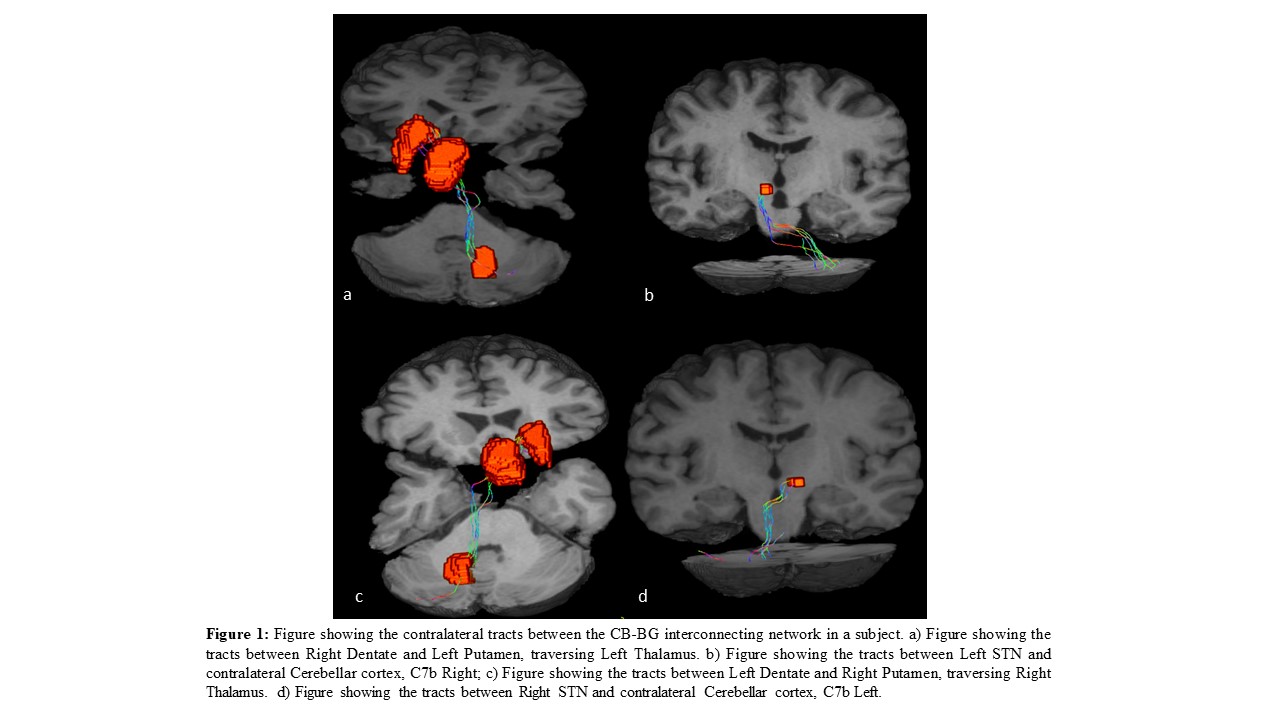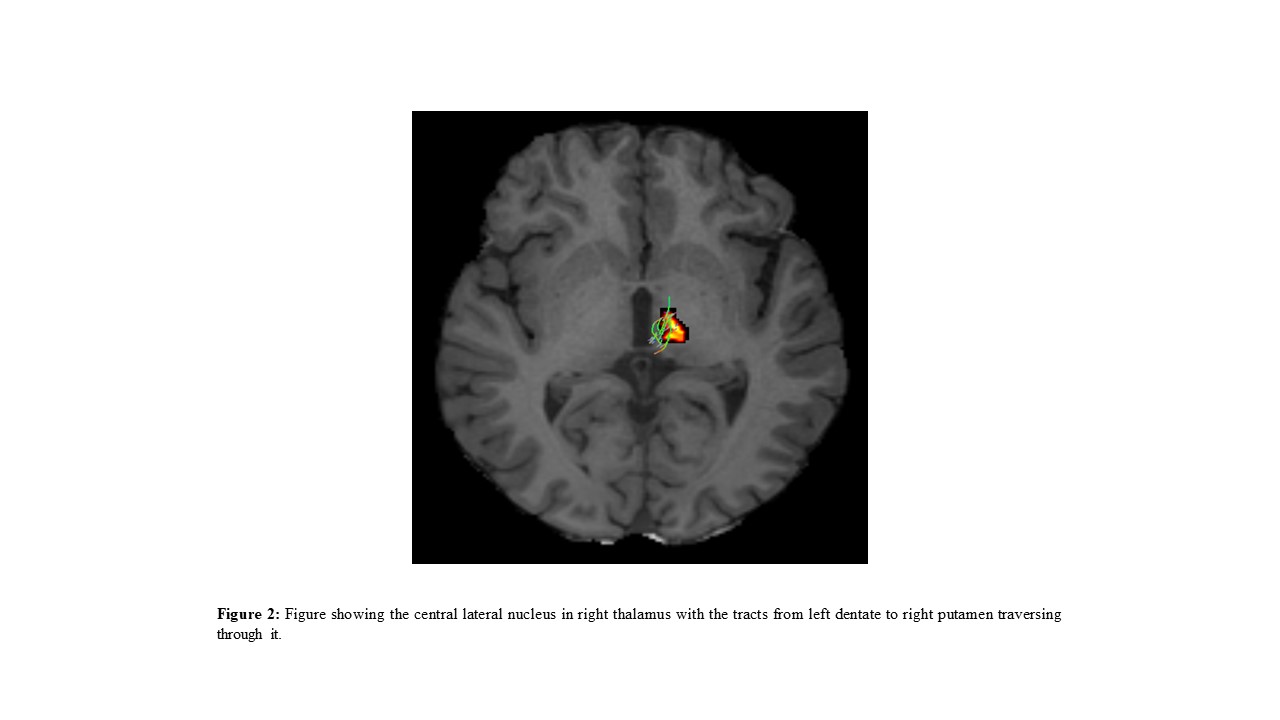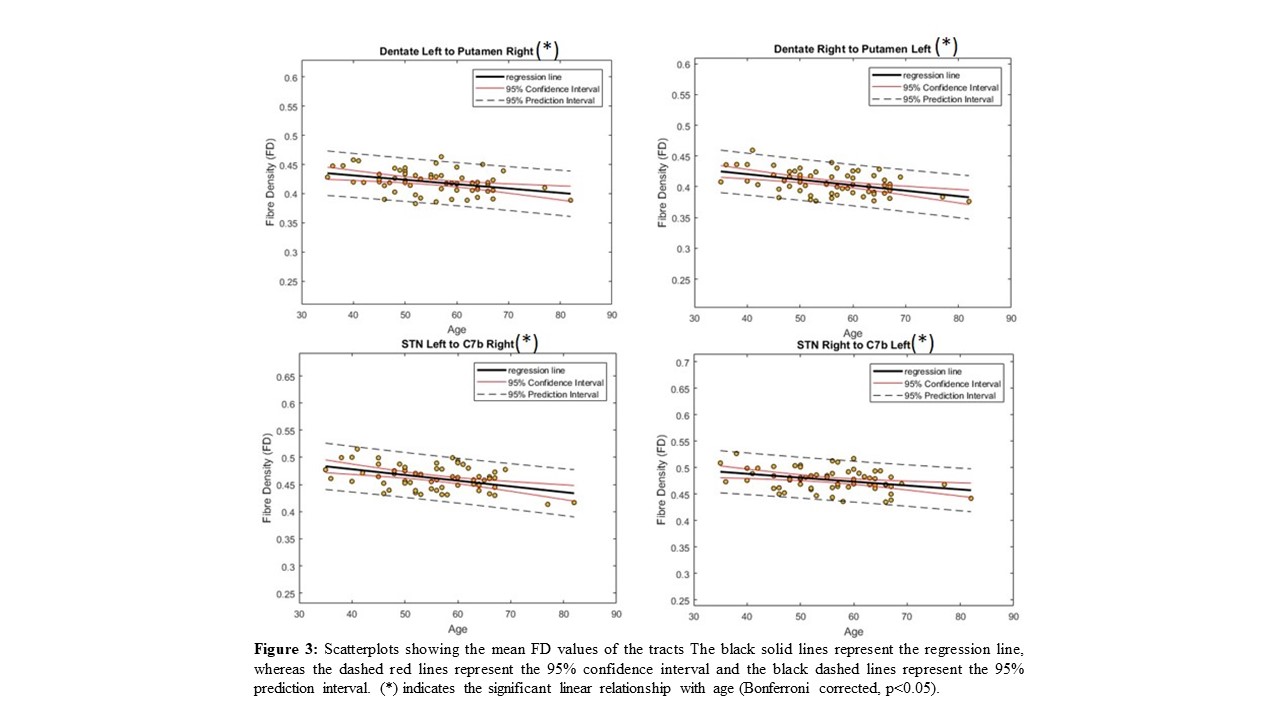Category: Neuroimaging (Non-PD)
Objective: The goal of the study is to use diffusion weighted imaging to confirm and expand on findings of structural tracks linking cerebellum (CB) and basal ganglia (BG) in humans, as well as to investigate the effects of age, sex, and total brain volume on the CB-BG white matter pathways.
Background: Using viral trans-neuronal tracers, neuroanatomical research in non-human primates found bilateral connections between the CB and the BG. These tracts play a vital role in the pathophysiology of movement disorders such as Parkinson’s Disease and Dystonia as well as in understanding the varied effects of pharmacological as well as surgical interventions such as Deep Brain Stimulation. This is the first study to establish the tracts on a larger dataset with a broader age range and establish the effect of age, sex and total intracranial volume on the microstructure of these tracts.
Method: Sixty healthy volunteers (HVs) (mean age:55.69±9.96), with no history of any neurological disorder, were recruited to undergo T1-w and diffusion-weighted MRI. Tractography was performed using the Mrtrix3 toolbox and anatomical segmentation of thalamus, STN, Dentate nucleus, and Putamen for the tractography analysis was performed manually by two independent experts to reduce inter-observer variability. The tract parameters of fibre density (FD), fibre cross-section (FC) and their combination FDC were estimated using the fixel-based analysis (FBA). A linear regression model was used to fit the observed parameter values and its variation with age, sex and Total Intracranial volume (TIV).
Results: Tractography provided direct subcortical tracts between CB-BG as in [figure1]. The tracts were found to traverse the central lateral nucleus as in [figure2]. The FD was found to have a significant (Bonferroni corrected p<0.05) negative linear relationship with the age as shown in the scatterplot in [figure3] for all the tracts whereas FC was not found to be significantly affected with age. After correcting for difference in brain sizes using TIV, the difference in the white matter tract properties between sexes were not significant.
Conclusion: In this study, we established the direct subcortical connections between CB-BG in human subjects. We observed a negative linear relationship between age and fibre density in the direct CB-BG interconnecting tracts.
To cite this abstract in AMA style:
V. Radhakrishnan, C. Gallea, C. Kesavadas, B. Thomas, S. Krishnan, A. Kishore. Study of age related neurodegeneration of Cerebellum Basal Ganglia direct subcortical white matter tracts using fixel-based analysis. [abstract]. Mov Disord. 2022; 37 (suppl 2). https://www.mdsabstracts.org/abstract/study-of-age-related-neurodegeneration-of-cerebellum-basal-ganglia-direct-subcortical-white-matter-tracts-using-fixel-based-analysis/. Accessed November 18, 2025.« Back to 2022 International Congress
MDS Abstracts - https://www.mdsabstracts.org/abstract/study-of-age-related-neurodegeneration-of-cerebellum-basal-ganglia-direct-subcortical-white-matter-tracts-using-fixel-based-analysis/



